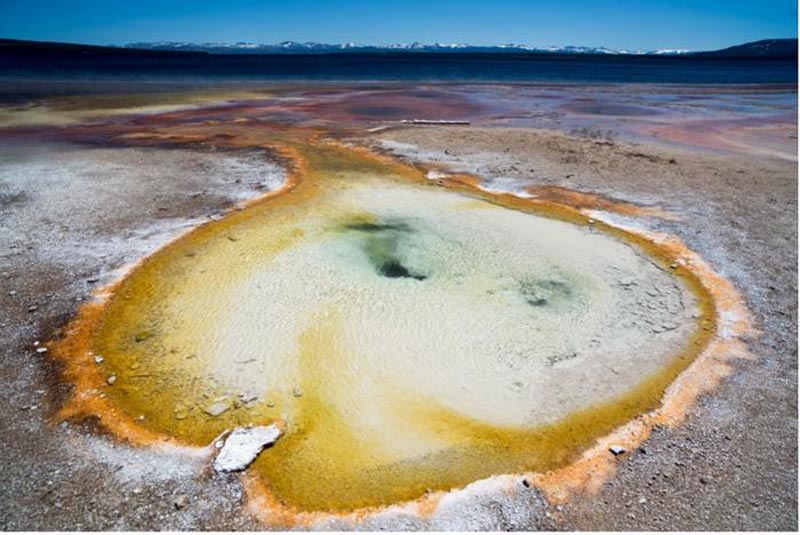

Scientists conducted microbial DNA sampling at a Yellowstone National Park hot spring for a study sponsored by DOE’s Biological and Environmental Research program, the National Science Foundation and NASA.
Credit: Mircea Podar/ORNL, U.S. Dept. of Energy
Scientists find evolutionary clues while examining microbes in far-flung hot springs.
Oak Ridge National Laboratory scientists studied hot springs on different continents and found similarities in how some microbes adapted despite their geographic diversity. The findings yield clues to the evolution of life and whether some of the hardiest microbes may be harnessed for biotechnology.
The study was the first of its kind to sample hot springs on three continents with water temperatures above 65 C (149 F) in the United States, Iceland and Japan.
The environments have unique geology and chemistry, almost like a fingerprint, so it was surprising to find highly related microbes separated by thousands of miles, said ORNL’s Mircea Podar, co-lead of the study with researchers at Montana State University.
“We found common microbes, but also diversity as the microorganisms adapted to local conditions,” Podar said. The scientists theorize that tectonic conditions and geology of the hot springs are at play, providing new insights into how life and the Earth have co-evolved. —Stephanie Seay
Journal: Environmental Microbiology
DOI: 10.1111/1462-2920.16472
Article Title: Tectonic and geological setting influence hot spring microbiology
Article Publication Date: 8-Aug-2023
Media Contact
Kim Askey
DOE/Oak Ridge National Laboratory
askeyka@ornl.gov
Office: 865-576-2841












